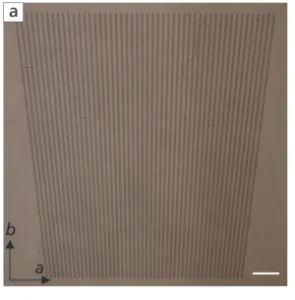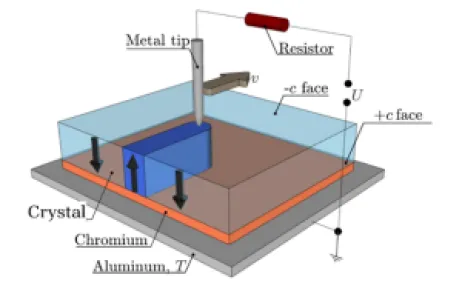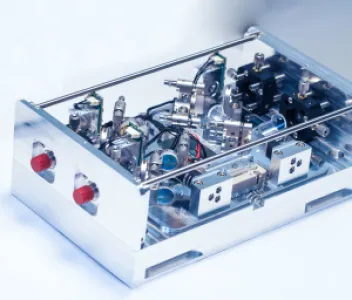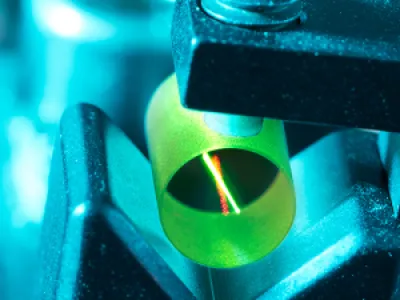Fraunhofer-Institut für Physikalische Messtechnik IPM
Booth number: 4205-27
www.ipm.fraunhofer.de
About us
Measuring | Monitoring | Optimizing
The Fraunhofer Institute for Physical Measurement Techniques IPM develops tailor-made measuring techniques and systems for industry. Many years of experience with optical technologies form the basis for high-tech solutions in the fields of production control, object and shape detection, gas and process technology as well as photonic systems. We develop laser light sources with customized wavelengths for various applications. Our services range from customer-specific nonlinear optical crystals for frequency conversion to the production-ready prototype development of optical parametric oscillators for OEM laser manufacturers.
Address
Georges-Köhler-Allee 301
79110 Freiburg im Breisgau
Germany
E-mail: info@ipm.fraunhofer.de
Phone: +49 7618 8571-0
Internet: www.ipm.fraunhofer.de
Contact person:
Dr. Frank Kühnemann
Head of Department Photonic Systems
E-mail: frank.kuehnemann@ipm.fraunhofer.de
Phone: +49 761 8857-457
Alexandra Scharla
Project Manager: Frequency Converters
E-mail: alexandra.scharla@ipm.fraunhofer.de
Phone: +49 761 8857-369
Products & Services
Nonlinear-optical frequency conversion: from components to systems
Maskless Poling of nonlinear-optical crystals
Periodically poled crystals are key components of many nonlinear-optical frequency converters, ranging from the visible spectral range up to the THz range. Fraunhofer IPM has developed a maskless poling technique combining short turnaround times, full flexibility in poling-pattern design with high quality poling results in materials like LiNbO3, LiTaO3 and BaMgF4.
The working principle
Maskless domain inversion is achieved by moving a metal tip over the surface of an unpoled lithium niobate crystal. A high voltage between the tip and a planar metallic bottom electrode leads to a well localized μm-sized domain inversion, right below the tip. By displacing the charged tip with high precision, we can serially write domain lines into the crystal. To ensure high-quality poling results, the electrical poling current is monitored and controlled.
The technique delivers high-quality poling results independent of the crystal’s crystallographic x- and y-axes. Thus, any structure (e.g. fan-out, or radial patterns) can be written. The quality of the poling pattern can be checked via bi-sided domain selective etching.
Your benefit
Fraunhofer IPM offers maskless poling as a service, ranging from one-of-a-kind to small-volume production. You will benefit from short turnaround times, which gives you a temporal advance for your research or product development. If requested, dicing and polishing can be offered as well. Besides »poling-as-a-service«, Fraunhofer IPM offers turn-key poling machines for your own in-house maskless poling production, without the need for clean-room facilities.
Nonlinear-optical frequency conversion
Nonlinear-optical frequency conversion paves the way towards »tailor-made wavelengths« beyond the ranges of laser materials. Fraunhofer IPM has specialized in solutions for continuous-wave conversion.
Tailor-made wavelengths
Turn-key tunable light sources combine state-of-the-art hardware with a user-friendly interface. With a strong focus on CW sources with output powers ranging from microwatt to multiwatt, we address the needs for both individual solutions for end users in science and industry as well as product development for OEM.
Conversion modules
Fraunhofer IPM is known for its expertise in combining optics, mechanics and electronics. We integrate nonlinear optical components into robust conversion modules, for example MIR-NIR upconverter for fast, accurate and sensitive detection systems. From proof-of-principle demonstrators to prototype development for OEM applications – we provide solutions with short development cycles.
Absorption spectroscopy of optical materials
High powers need high purities: The current development of high-power lasers calls for better quality assessment of optical materials for high-power applications and sensitive methods.
Photothermal methods like common-path interferometry (PCI) are used to measure and secure the performance and quality of optical materials and coatings. PCI is based on a pump-probe-technique: A strong continuous-wave (cw) pump beam is focused into the sample, heating it locally due to light absorption. The resulting local change of the refractive index causes refraction and diffraction effects on the crossing probe beam.
Tunable pump lasers provide new measurement options
Traditionally, high-sensitivity absorption measurements are performed at the fixed wavelengths of high-power lasers, since these are the most relevant ones for such optical components. Fraunhofer IPM goes one step further by combining PCI with in-house developed cw optical parametric oscillators (OPO) as pump lasers. This way, absorption spectra of materials and components to cover large wavelength ranges can be provided.
Your benefits
Combining high sensitivity and tunable pump sources results in two benefits:
Utilizing the tunability of the OPOs by Fraunhofer IPM, medium-strength absorption features present in the sample, e.g. OH absorption in fused silica, may be recorded with the PCI spectrometer and used for an absolute calibration of the absorption measurement if “new” materials are to be analyzed.
In material and technology development, recording the absorption spectra may assist to identify process-related impurities which limit the performance of the material.
Fraunhofer IPM offers absorption measurements as a service as well as turn-key systems tailored to the customers needs.






